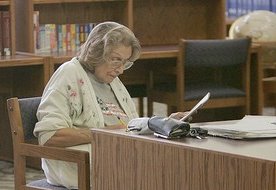Judging by Appearance: Master Drawings from the Collection of Joseph and Deborah Goldyne

Henri Matisse
"La violiniste a la fenêtre" (The Violinist at the Window)
charcoal on paper 1924
photo courtesy of the Palace of the Legion of Honor
"Judging by Appearances" at the Legion of Honor is a rich exhibit of works on paper from the private collection of Joseph and Deborah Goldyne. The artworks have been arranged under broad themes by curator Robert Flynn Johnson, which leads to chance correspondences between disparate artists. Matisse's luminous charcoal drawing, "La violiniste a la fenêtre", with its silvery light seems apt for the fog shrouded skies above Baker Beach on a typical summer morning in San Francisco. (I imagine a similar view from Robin William's open window as I drive back from the museum through Seacliff towards North Beach.) Hanging nearby is a tiny Rembrandt study, which carries a similar force with the simplest of means. In one of my earliest drawing classes, the Los Angeles artist Tom Wudl looked at my work and said, "It is what you leave out of the drawing that is most important." He didn't mean it as a compliment. In contrast to my early efforts, Matisse and Rembrandt create entire worlds with ink smudges and charcoal smears.

Giorgio Morandi
"Landscape"
watercolor 1957
photo courtesy of the Palace of the Legion of Honor
Giorgio Morandi's "Landscape" somehow brings the fragrance of Italy back to me. I really can't explain the watercolor's effect on me. Like the Matisse and the Rembrandt, Morandi's work combines the utmost simplicity with incredible grandeur and presence. A Turner study of the Moselle hangs nearby and it too pulses with color and space, as the work seems to melt into an abstraction of pure light.
Unlike many exhibits, the label commentaries in "Judging by Appearances" are well written, witty and opinionated. Both the curator, Robert Flynn Johnson, and the collector, Joseph Goldyne, provide their honest thoughts on the works. And as viewers we seem to be encouraged to join the dialogue and contribute our own thoughts.
This is a beautiful exhibition, which should be viewed before it closes on Sunday. Museum staff members promised me that a catalog is in the works and should be in the bookstore any day now. The museum's website provides very little info on the show so the catalog will prove to be indispensable.





















